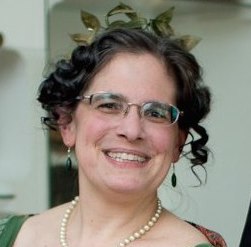On January 25, 1862, a dramatic little story appeared in a column in The Philadelphia Inquirer, “The New York Letter”, which covered news from New York City. The United States was eight months into the Civil War against the Confederacy (formally, the Confederate States of America, or C. S. A.), and New Yorkers were on the alert for Confederate spies, or “Secesh” (secessionists). So it was quite alarming for a gentleman to notice, in a paint shop,
several suspicious looking bundles, boxes, etc., marked “C. S. A. Sutler’s Department,” “C. S. A. Medical Department,” etc.
He reported the items to the police, and detectives were duly assigned to watch the shop, where, on the evening of January 23rd (going by the date of the column), they noticed someone leaving the premises,
enwrapped in a long cloak and scarf, carrying the suspicious bundles under his arm
Suspicious indeed! The detectives followed him to a house, which he and dozens of other cloaked men entered. Was it a secret meeting of spies? Smugglers? Terrorists? Police surrounded the house, but after sending one policeman inside to reconnoiter, they abruptly retired from the scene.
Why did they leave? And what does this have to do with dance, anyway?

